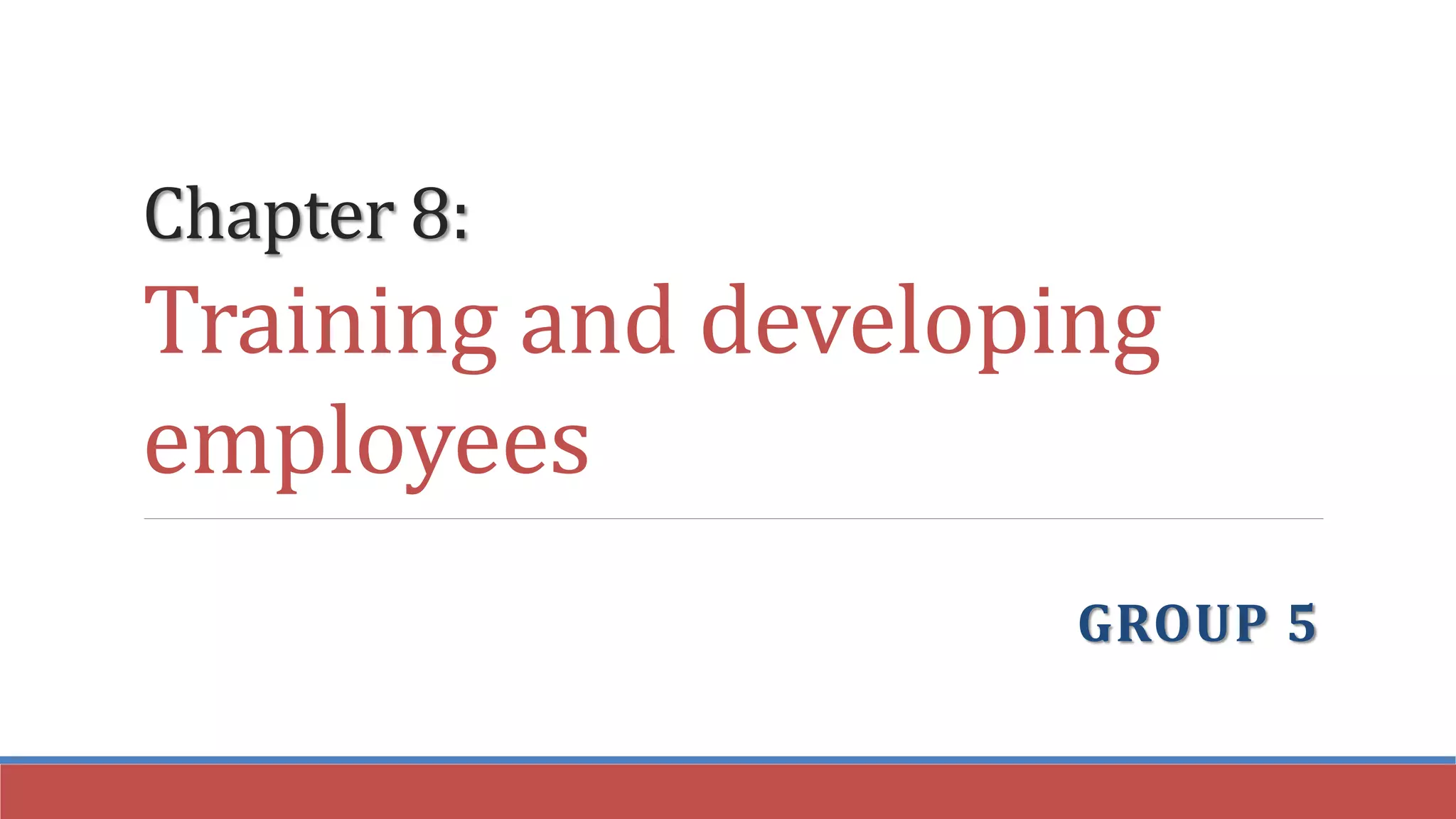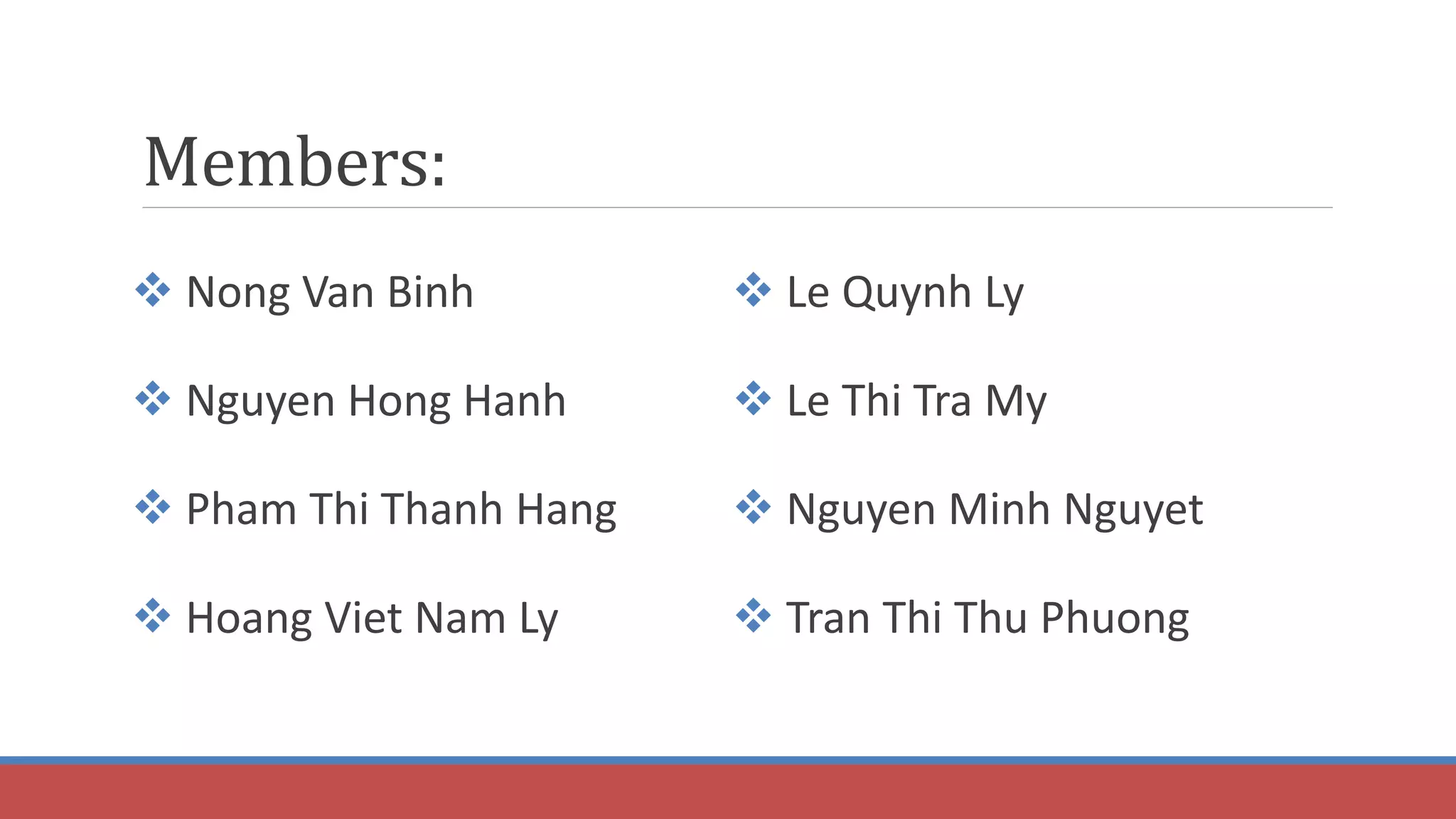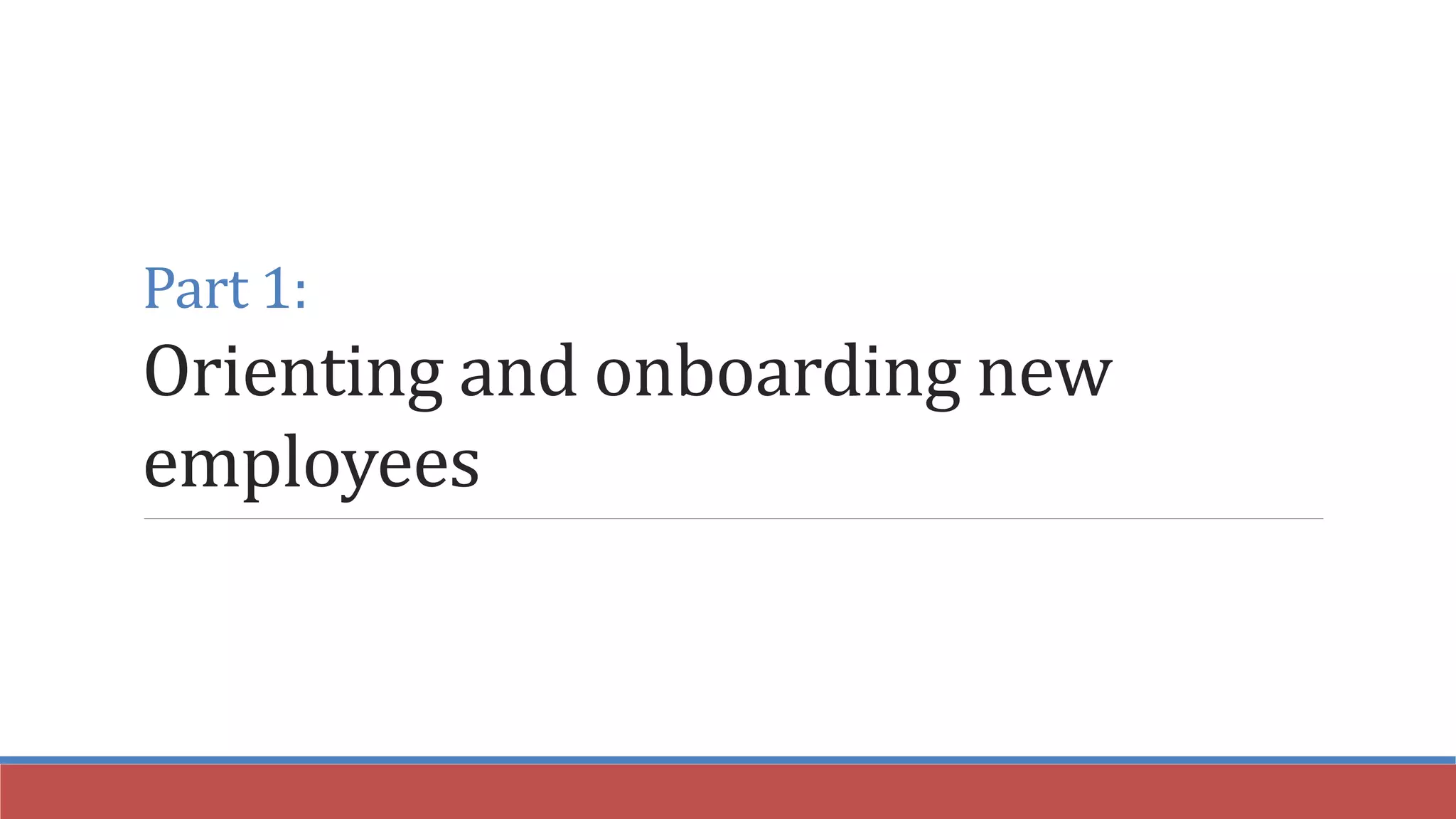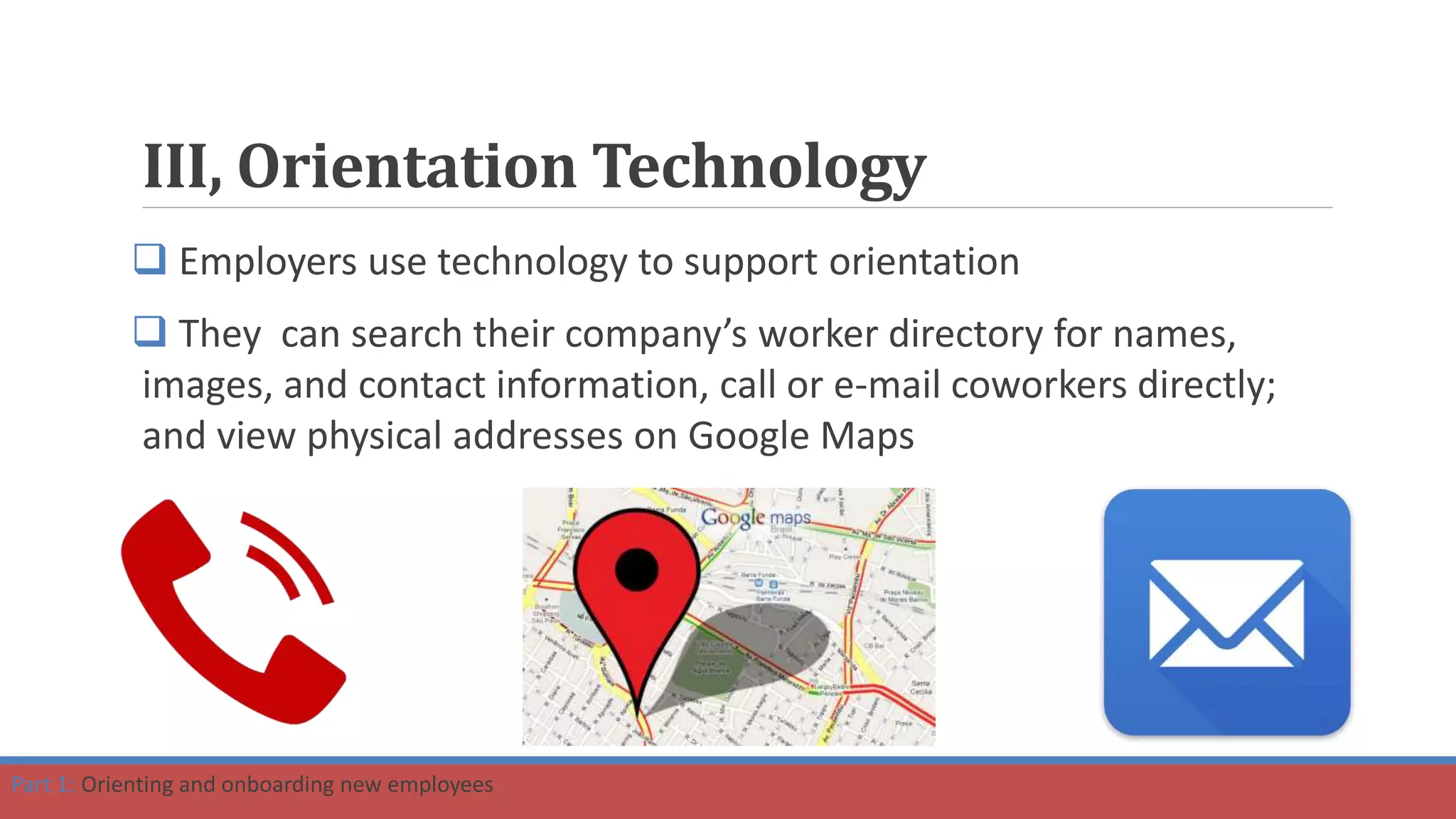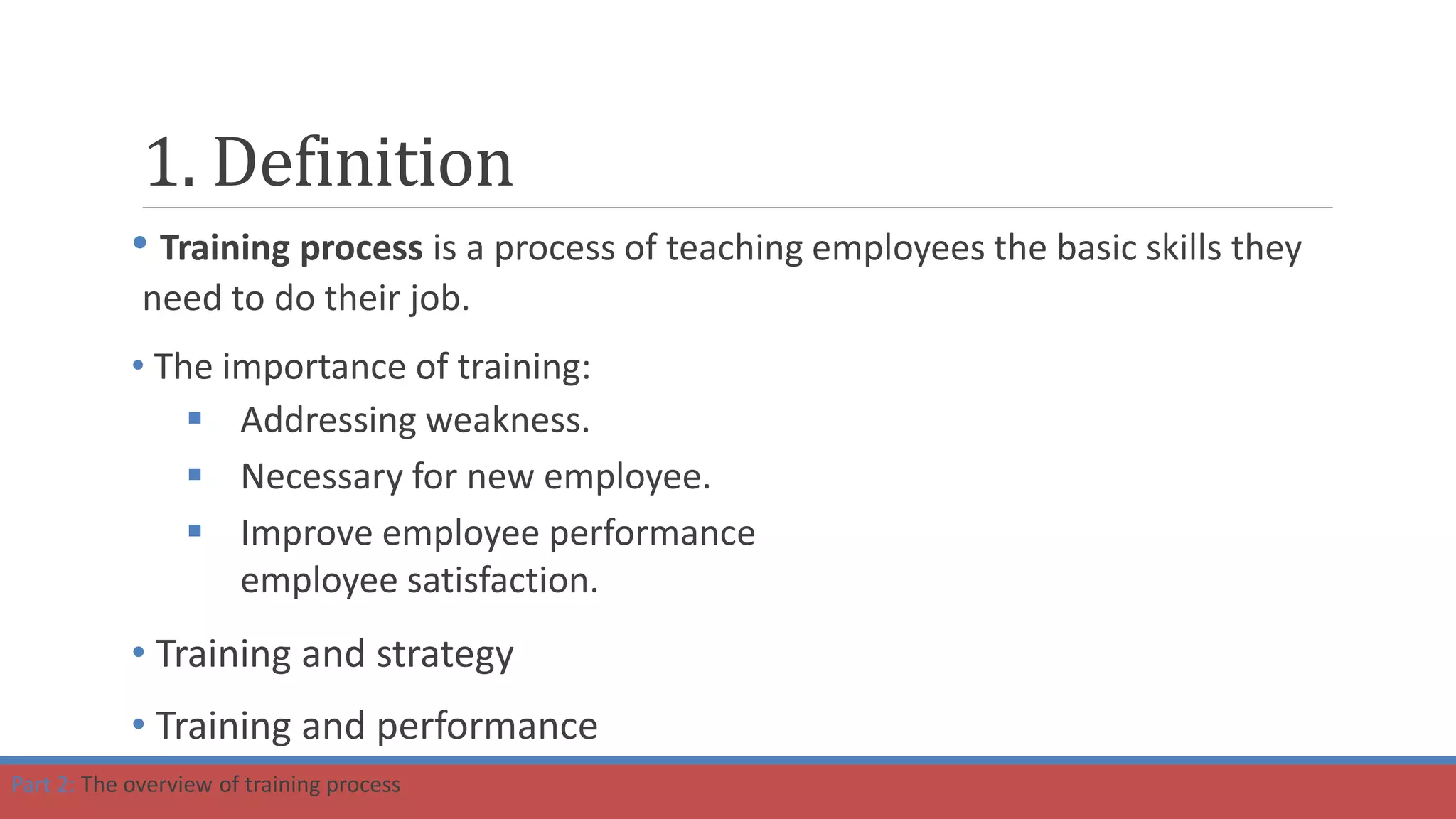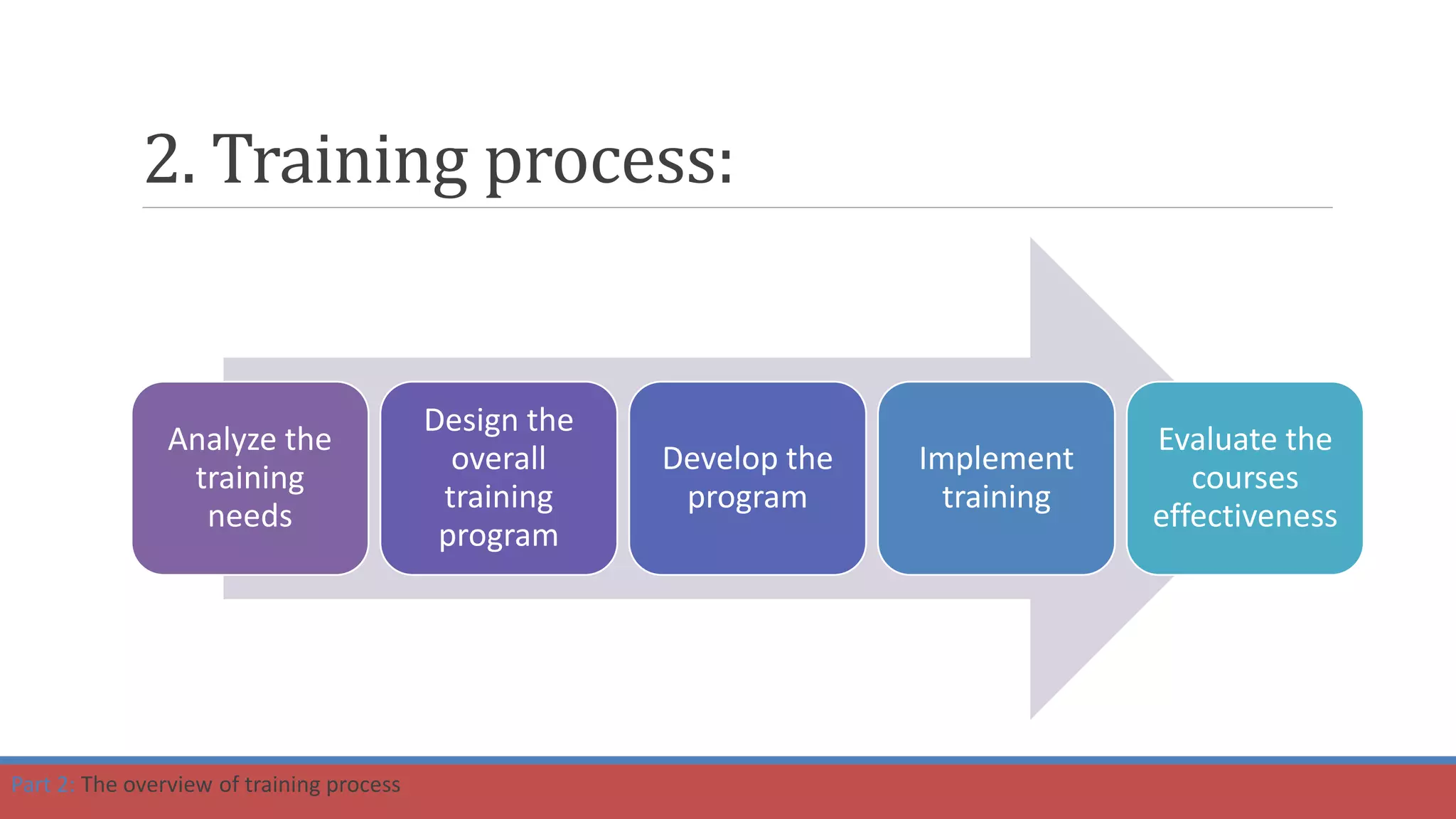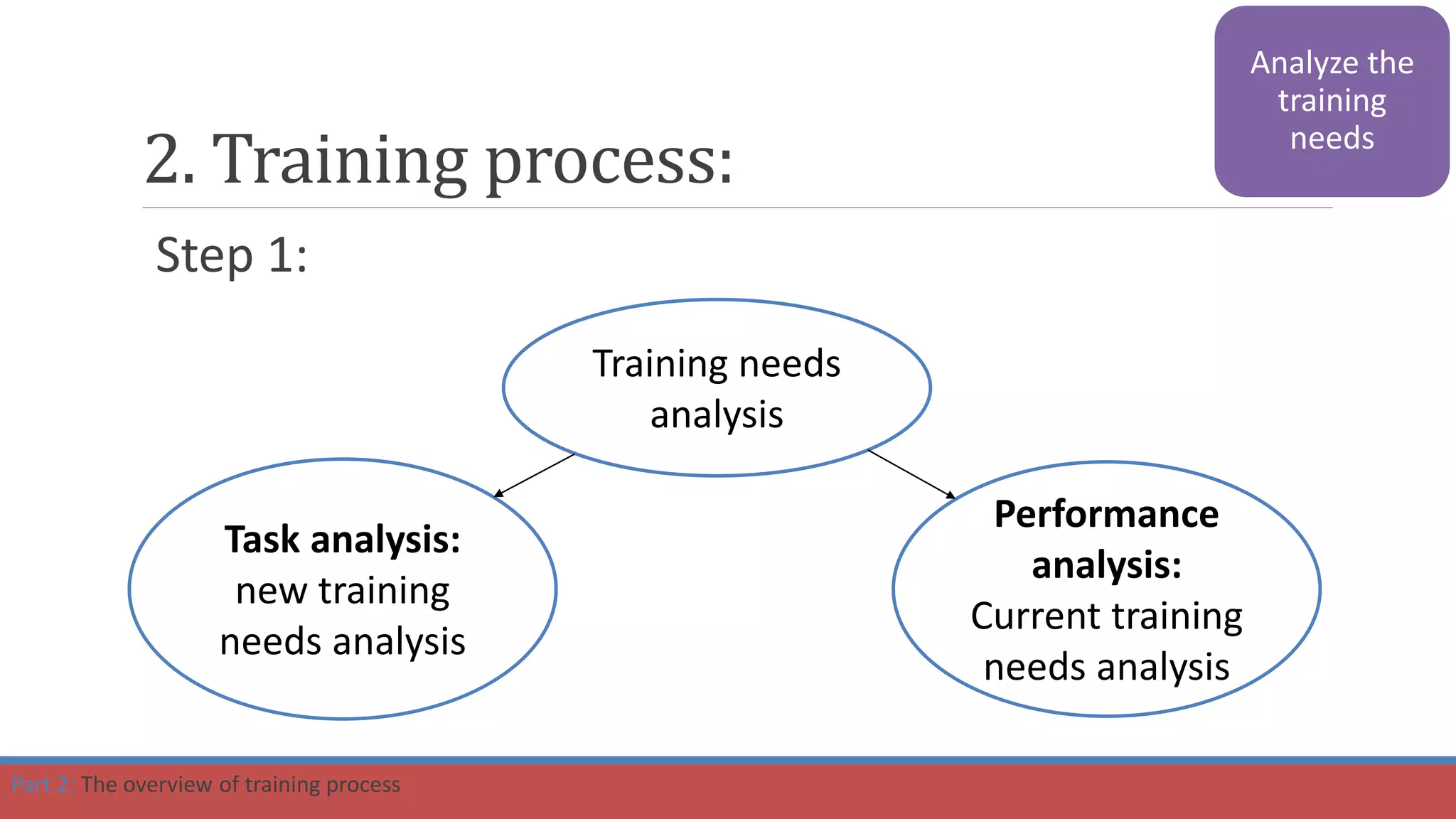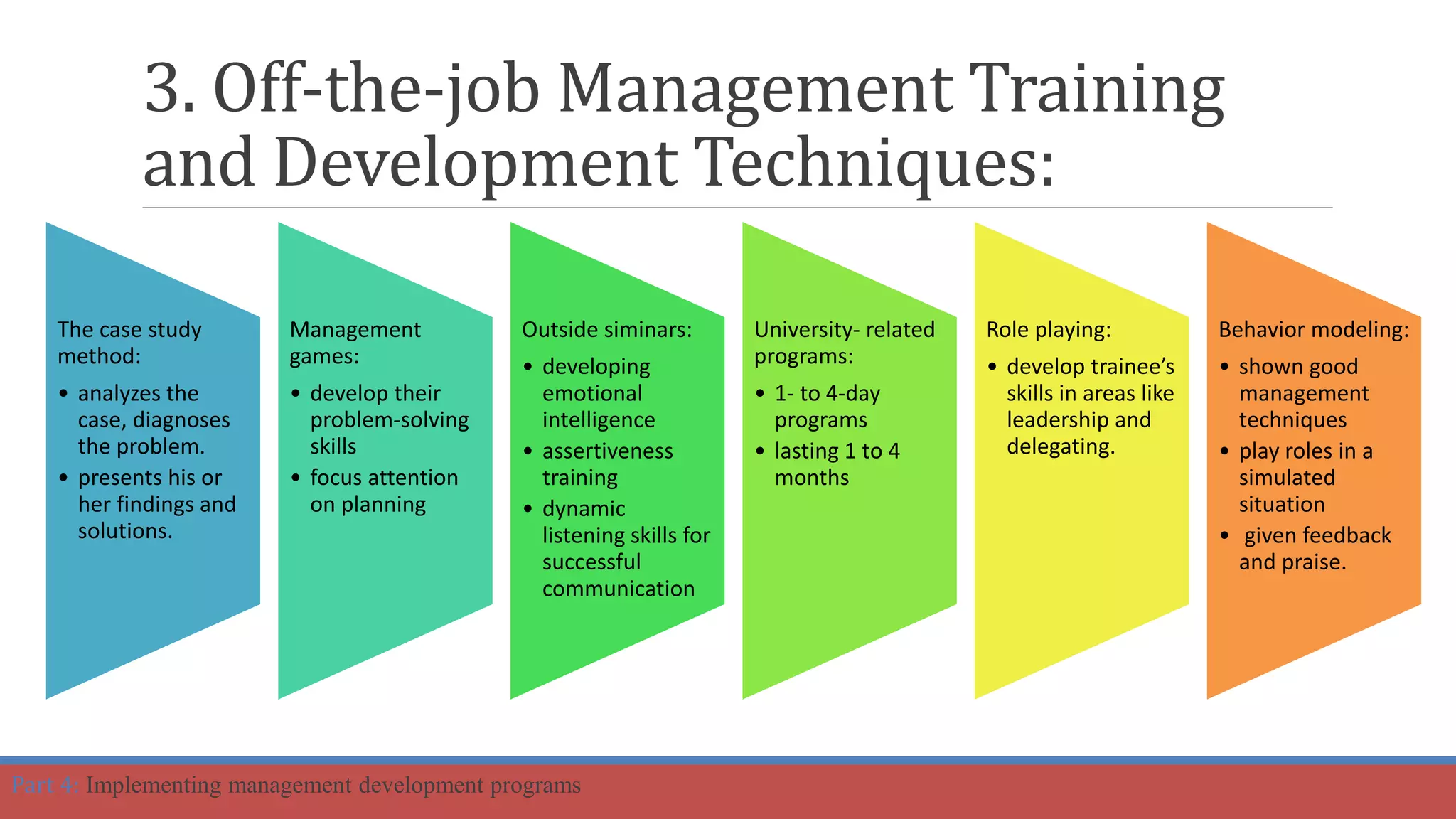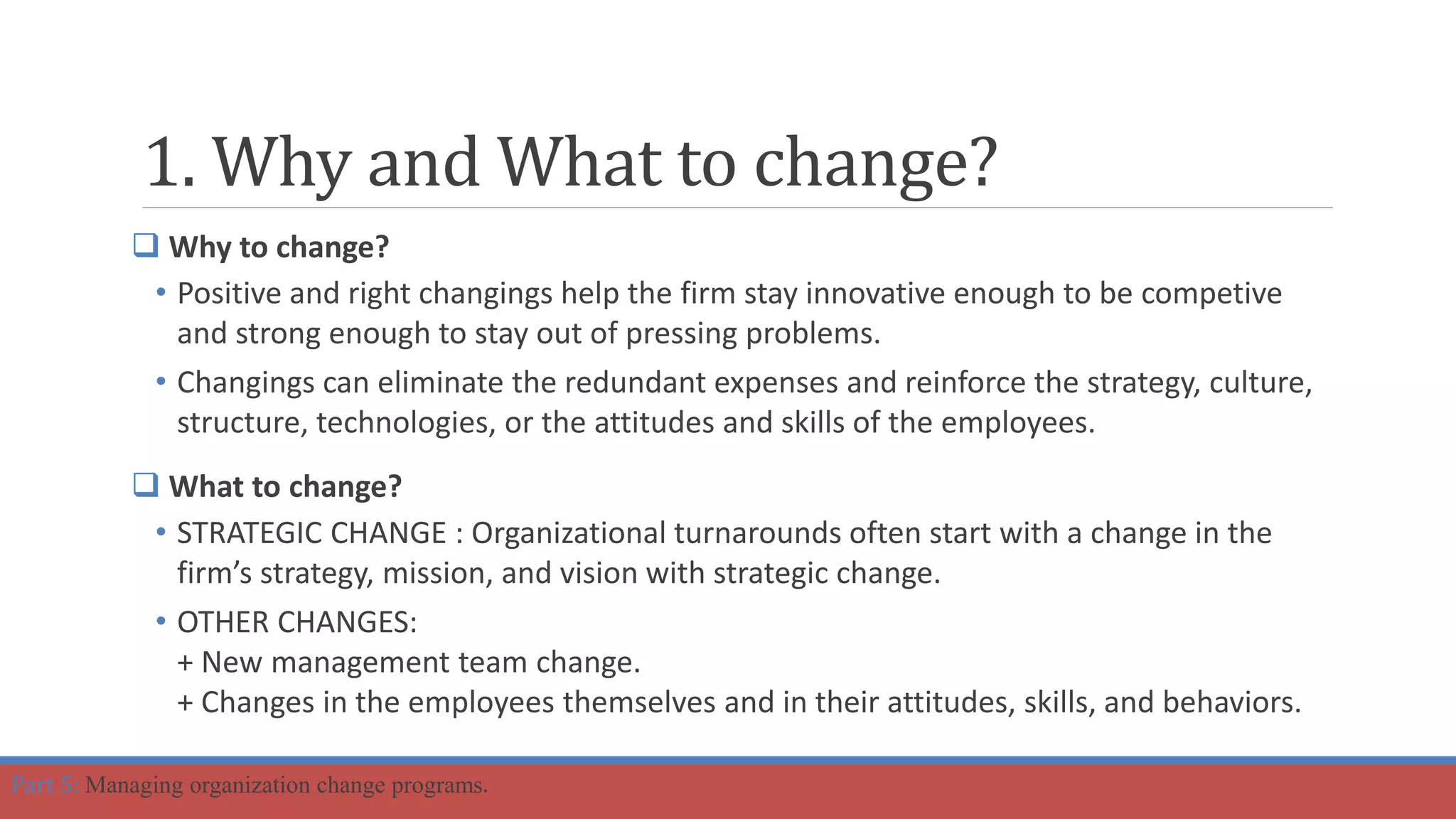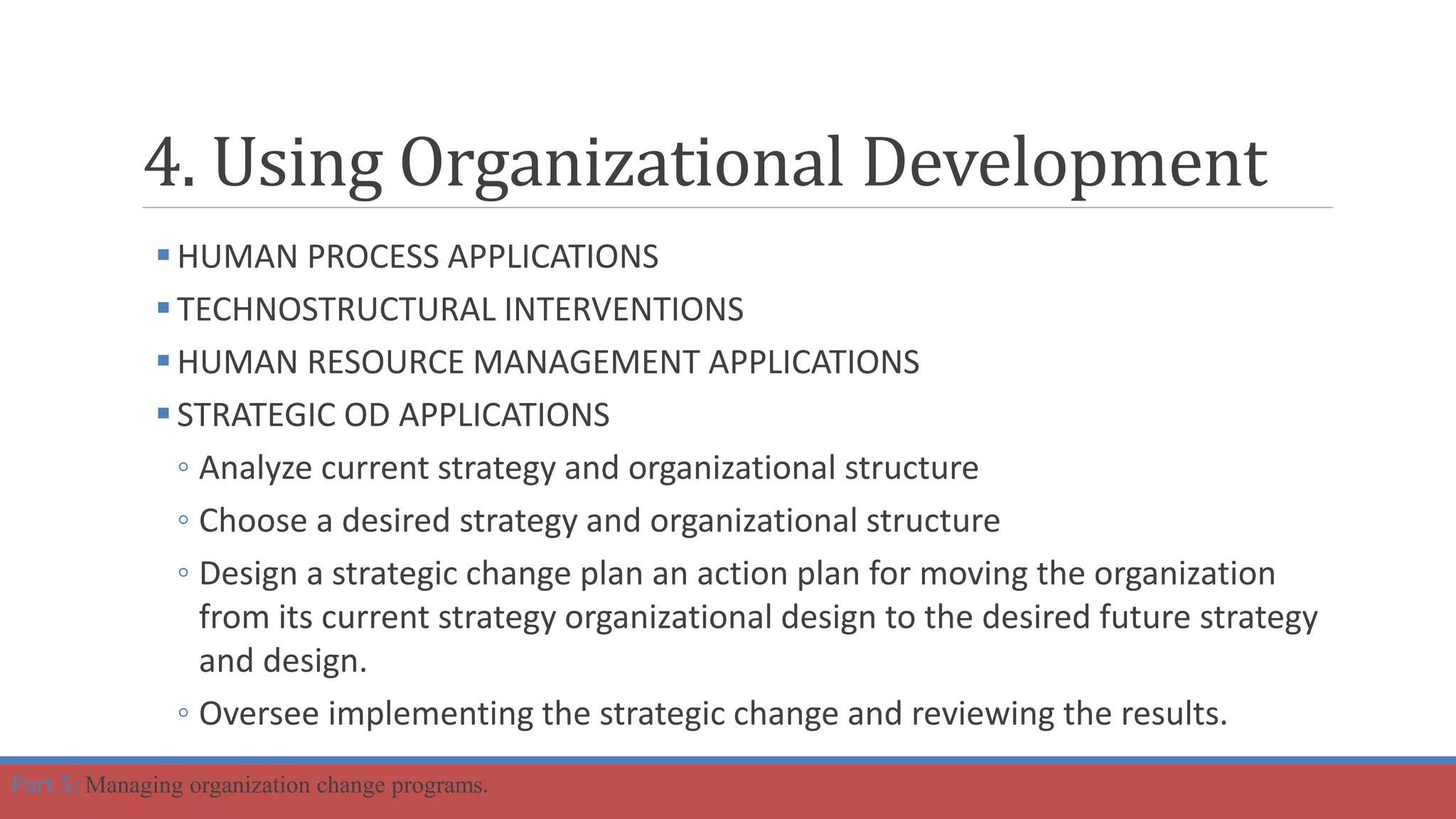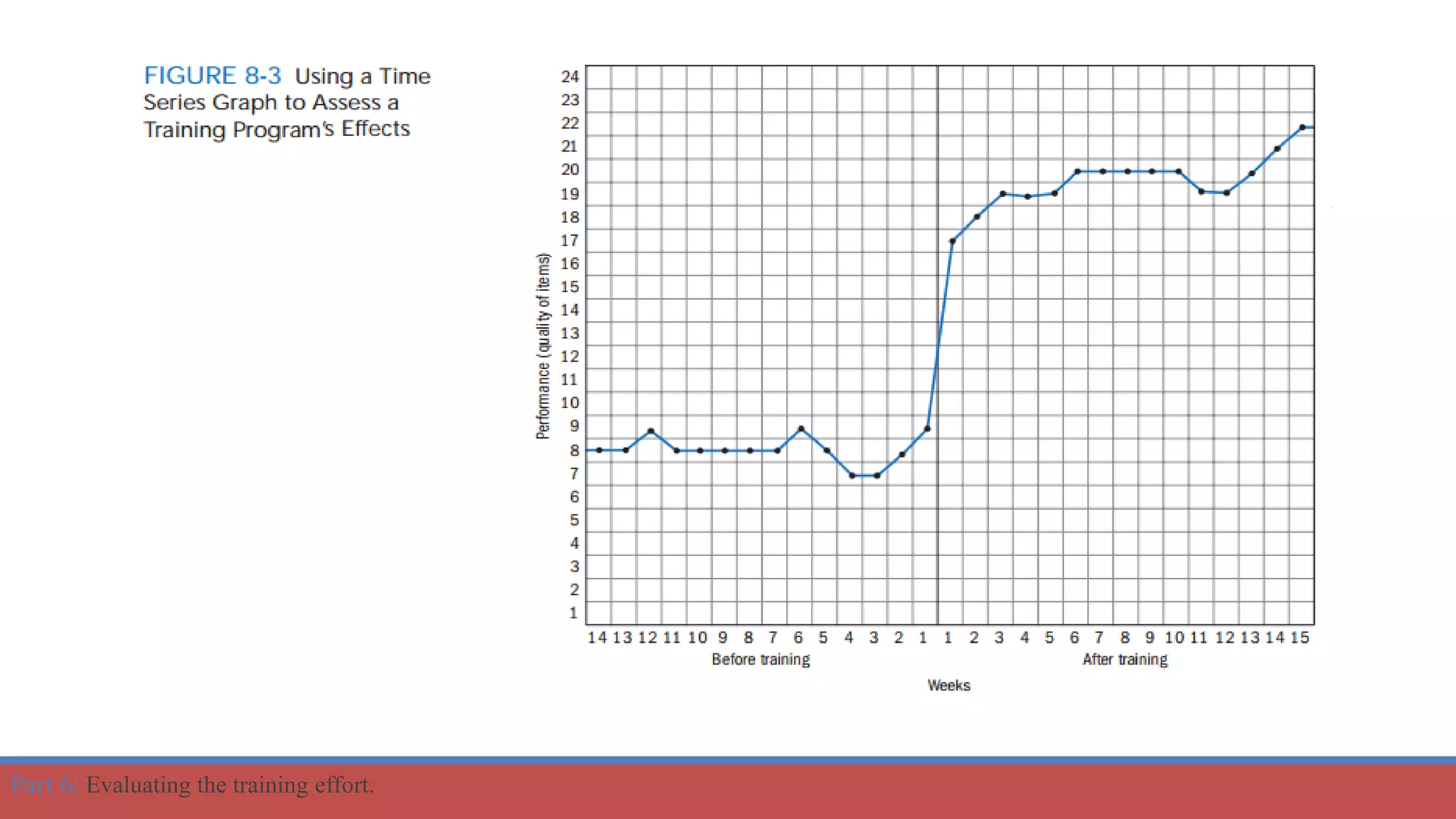Group 5's document discusses training and developing employees over 6 parts. Part 1 covers orienting and onboarding new employees to introduce them to workplace culture and expectations. Part 2 provides an overview of the training process, including analyzing needs, designing programs, developing content, and implementing training. Part 3 discusses various training methods like on-the-job training and lectures. Part 4 focuses on management development programs using strategies like job rotation and case studies. Part 5 examines managing organizational change and models like Lewin's change process. Finally, Part 6 evaluates the training effort by measuring reaction, learning, behavior, and results.
